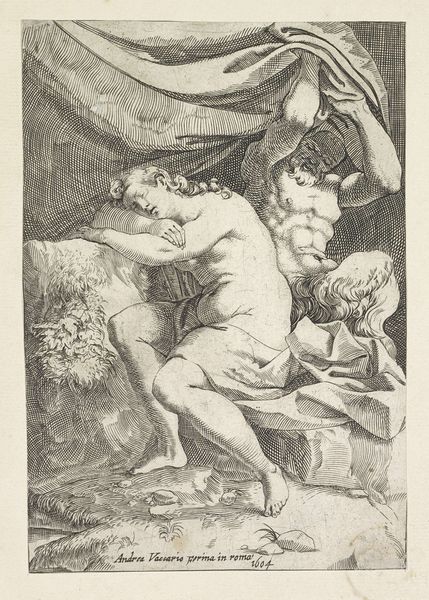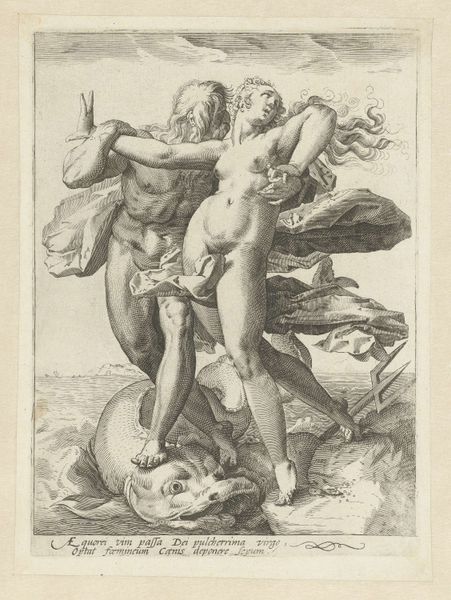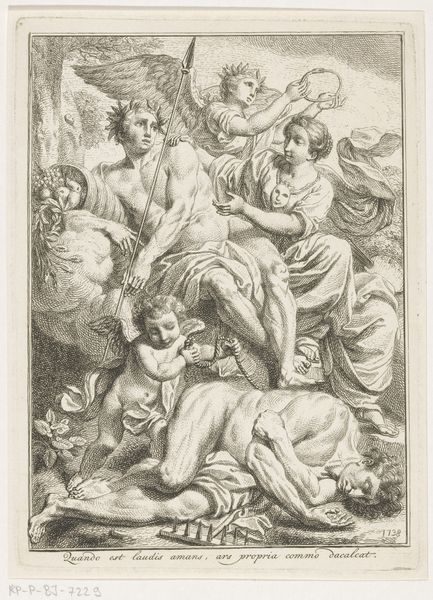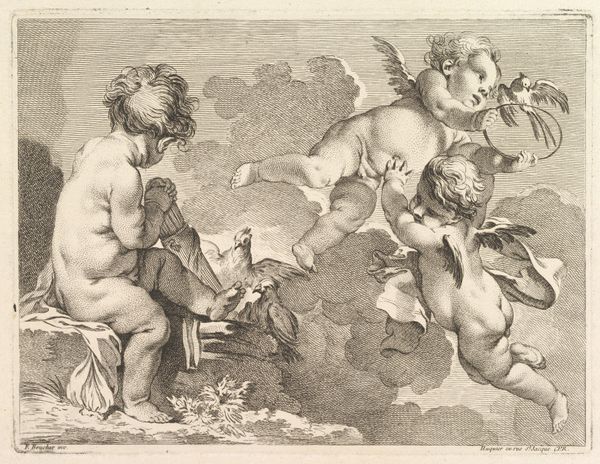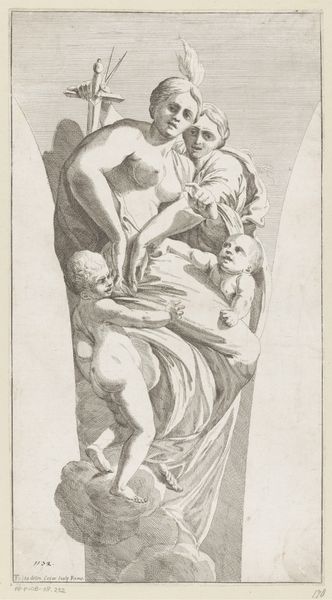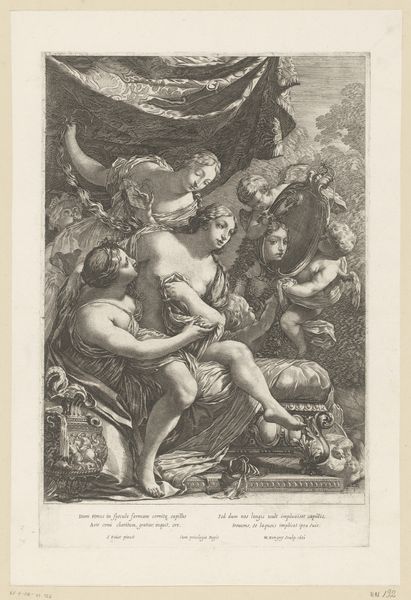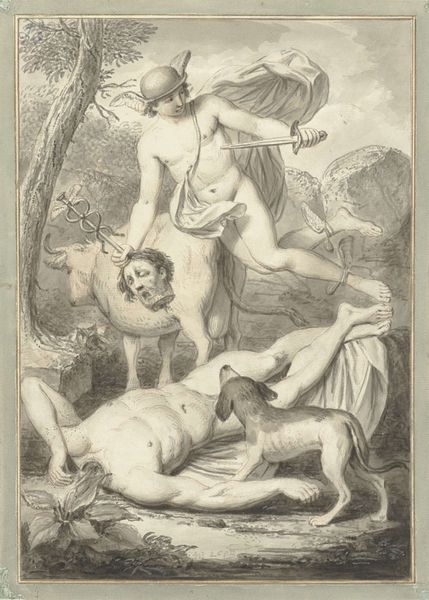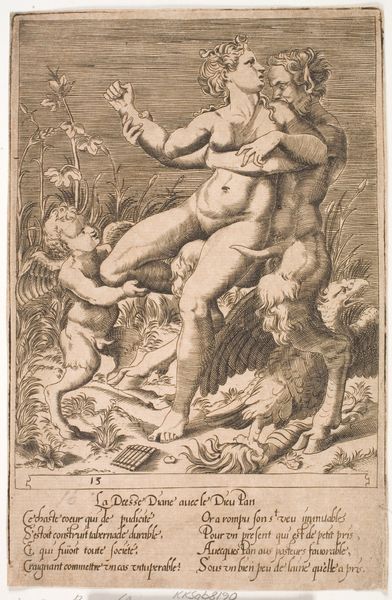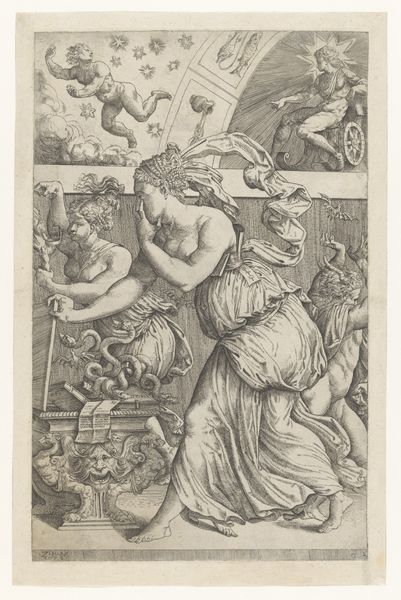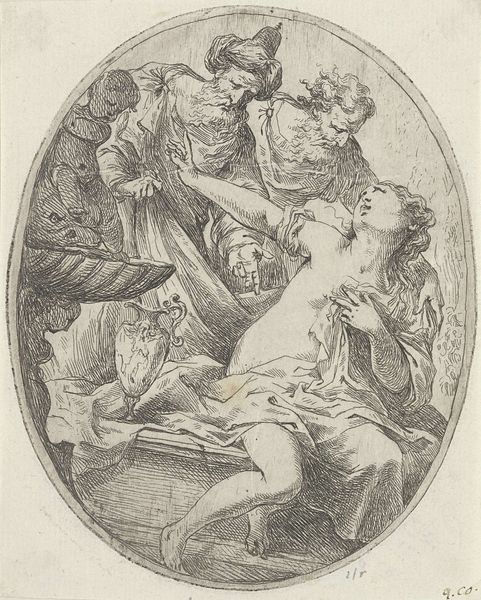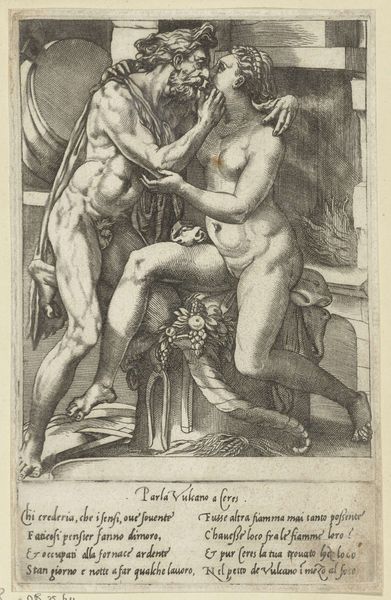
drawing, print, engraving
#
drawing
#
baroque
# print
#
figuration
#
engraving
#
erotic-art
Dimensions: Plate: 6 3/4 × 4 15/16 in. (17.2 × 12.6 cm) Sheet: 11 7/16 × 7 11/16 in. (29.1 × 19.6 cm)
Copyright: Public Domain
Curator: Here we have Pieter de Jode I’s engraving, "Mercury Embracing Venus," created sometime between 1588 and 1634. What’s your initial take? Editor: It strikes me as quite... tactile. The density of the cross-hatching really emphasizes the figures' embrace. It feels both sensual and, dare I say, a little voyeuristic with Cupid observing above. Curator: That "voyeuristic" element plays into the broader politics of imagery during that time. Printmaking democratized access to classical themes, allowing a wider audience to consume these narratives and the power dynamics they represented. Notice the idealized forms of Venus, typical of the Baroque era. Editor: Absolutely, Venus here embodies a specific kind of desirable femininity legitimized by classical precedent, and thus inherently shaped by socio-cultural constructs. What's also worth exploring is the performative aspect of mythological scenes during that time and for whom was that staged eroticism directed to. The presence of Mercury speaks to the themes of communication and connection but his gesture could also come off as possessive today. Curator: The classical stories depicted were always in dialogue with contemporary social norms and anxieties. Who got to own those narratives? Who was excluded? Pieter de Jode I was part of a family dynasty of printmakers who circulated and participated in this conversation. The institutions such as the Church commissioned many of those mythological prints thus revealing their involvement in circulating them. Editor: Considering it is displayed in the Metropolitan Museum of Art now, its cultural meaning has changed dramatically throughout history and has been continuously appropriated for distinct causes. Curator: Precisely! Engaging with such work prompts critical questioning on how representation of intimacy intersect with historical power structures. It encourages us to explore who art serves and whom it represents, today and always. Editor: It is quite something to reflect how images depicting intimacy from centuries ago, like this, remain a mirror reflecting back on our contemporary debates regarding identity, gender and the ever-evolving politics of seeing.
Comments
No comments
Be the first to comment and join the conversation on the ultimate creative platform.
